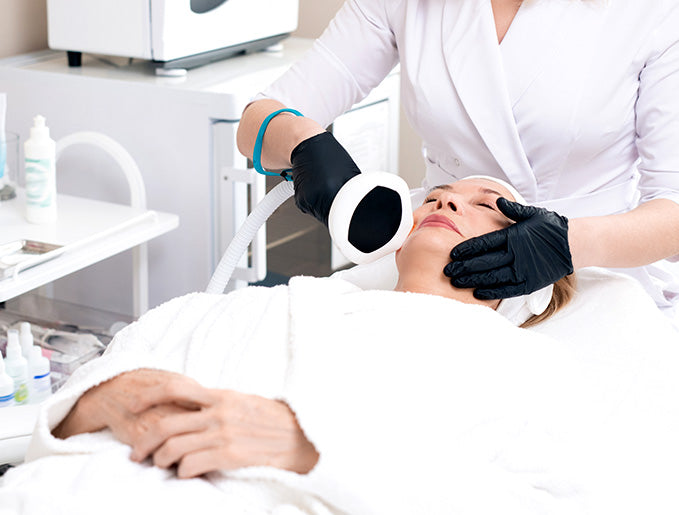We all agree that the skin is the largest body organ, and we should take great care of it to ensure we have a healthy living. The use of sunscreen and other skincare products is good but not enough because the skin can be affected both internally and externally. Laser skin treatments are being utilized in revolutionizing the beauty industry to ensure acne, hyperpigmentation, and wrinkles are treated. In this piece, you will get the correct information that you need to know before settling for the laser.
What is a Laser?
Laser (L-A-S-E-R) means Light Amplification by Stimulated Emission of Radiation. It is a one wavelength source of excellent energy light that can be precisely focused to convey the morning to a small area to attain the preferred effects. Lasers have lights traveling in a thin beam with excellent output per unit area that allows them to be utilized in numerous fields ranging from metal cutting and welding to laser operation and skin treatments.
How are the Cosmetic Lasers Used?
Lasers have become popular in cosmetic dermatology, where they are utilized in hair removal, tattoo removal, and skin resurfacing and generally help in scar removal and improve the general appearance.
The success of these aesthetic machines operation depends on the type of the skin, color, quantity of ink, location, layering, and tissue change. It removes wrinkles and lines resulting from the sun’s harm, folds, creases around the mouth and nose, and acne scars, resulting in a new surface that allows the growth of new skin.
Types of Cosmetic Lasers
In dermatology, the lasers used are either Ablative or Non-ablative. The Ablative Lasers are used to vaporize the outer layers of the affected skin. On the other hand, non-ablative lasers operate deep into the skin without affecting the skin’s top layer.
The difference between the lasers is brought by the change in wavelength that aims at the different skin tissues. Fractional lasers pinpoint particular areas under the skin instead of treating the whole area. Keep reading to learn more about the specific type of lasers, their use, and their advantages and disadvantages.
Carbon dioxide (CO2) lasers
These particular lasers utilize carbon dioxide to generate an infrared beam of light. The CO2 lasers have gained popularity internationally because of their ability to generate energy that can be effortlessly absorbed by water present in massive quantities in human tissues. The laser has minimal side effects.
Advantages of CO2 lasers
The main advantage of the CO2 laser is that it provides excellent enhancement of the general texture, reduces stubborn pigmentation, and improvement of fine lines. It works very well with deep wrinkles and acne scarring.
Disadvantages
The problem with CO2 lasers is that the laser resurfacing needs more time to recover. The exercise will leave the patient with weepy skin that you must wash about four times a day for four weeks. After the treatment, the skin is pink or red, and you have to take great care to prevent sun exposure. Another disadvantage is that it is not ideal for patients with darker skins because of the reduced pigmentation in the treated area.
IPL Lasers
These are Intense Pulsated Light lasers that have been rated class five by the FDA. They are meant to generate a pulse of light which seamlessly suited to enter brown and red pigments. The primary use of IPL laser is to treat brown patches, including liver spots and discharging swollen blood vessels under the skin.
Advantages
Since it is a non-invasive treatment, it has minimal damage to the skin. The treatment takes a short period, about 40 minutes, making it suitable for many people. This treatment is very effective and can achieve rosacea skin enhancement after about two intense IPL sessions.
Disadvantages
About 3 to 6 sessions will be ideal for complete skin rejuvenation. There should be about four weeks between treatments to permit complete skin healing. This type of treatment is not appropriate for darker skin because it will cause discoloration.
Alexandrite Lasers
These lasers utilize a green gemstone to generate a laser in an appropriate wavelength that can effectively penetrate red spots. They are used for tattoo removal, treating inflamed blood vessels, and hair removal.
Advantages
It works very well on thinner hair compared to other hair removal lasers. It is effective in treating people with freckles and light skin.
Disadvantages
The Alexandrite laser system causes more pain compared to other lasers types. It can also cause discoloration of the skin when used on dark skins.
Nd: YAG Lasers
Nd: YAG lasers generate an infrared wavelength that permits dermatologists to penetrate deeper skin tissues than other laser types. This effectively treats birthmarks, hemangioma tumors, spider veins, and varicose veins.
Advantages
It is safe for all skin types since it does not target melanin. It requires fewer energy pulses due to the long wavelength produced, making the process comfortable and within a short time. Effective for treating larger areas.
Disadvantages
Nd: YAG is ineffective in fine hair removal and may need more sessions in general.
Who is the ideal candidate for Cosmetic lasers?
Even though you may have skin blemishes and ailments mentioned above, the utilization of cosmetic laser therapy may not be the most appropriate solution. The best candidate for the surgery must meet the following requirements;
• You must be 21 years and above adult with no more physical development.
• It would be best if you had a light skin tone to avoid discoloration.
• Skin blemishes should be close to the skin surface because the laser beams infiltrate the upper layer.
• It would be best if you were not having any health complications like acne flare-ups.
• It would be best if you understood the boundaries of the procedures, including where and how you can utilize them and what they cannot treat.
However, patients with darker skin tones can still have cosmetic laser treatments after discussing with the surgeon.

